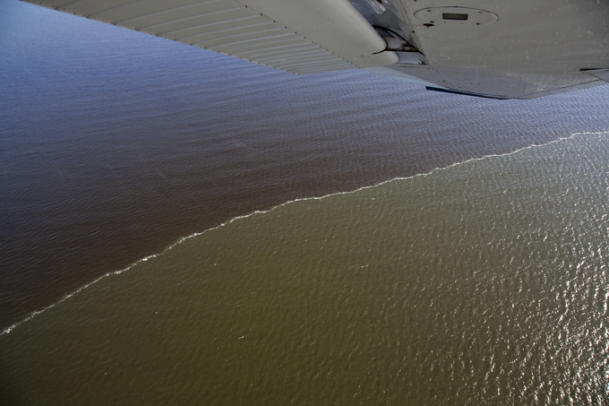Tue Mar 22, 11:06 am ET Officials remain baffled over source of oil slick as Louisiana coastline is oiled againBy Brett Michael Dykes |
| Photo by John L. Wathen |
Days after observers spotted a massive oil slick in the Gulf of Mexico, no one in a position of power seems to yet know where it's coming from. So far, official reports are sketchy and contradictory, as New Orleans Time-Picayune reporter Mark Schleifstein notes in reviewing a statement from the U.S. Coast Guard:
"At this point, the dark substance is believed to be caused by a tremendous amount of sediment being carried down the Mississippi River due to high water, possibly further agitated by dredging operations," the Coast Guard release said.
A spokesman for the Army Corps of Engineers, however, said none of the three dredges operating near the mouth of the Mississippi River has reported any oil in the material they're removing from the river bottom to keep the channel deep enough for ocean-going ships.
But as Louisiana officials and the Coast Guard conduct tests to determine the source, an all-too-familiar scene is developing over a 30-mile stretch of coast: Oil and oil byproducts such as tarballs have come rolling in. And teams of workers are rolling out a containment boom—the fencelike structures designed to keep oil from washing ashore—as oil-skimming vessels try to intercept the oil on the water's surface. And where the oil has landed, cleanup crews are scouring up the petroleum mess."We have 10,000 feet of hard boom and 9,000 feet of five-inch sorbent boom ordered into the area. We have 5,000 feet of each boom already delivered and staged in Grand Isle," Coast Guard Capt. Jonathan Burton said in a statement.
Meanwhile, residents of the Louisiana Gulf community of Grand Isle, who thought they'd finally turned the page on the nightmare of last year's BP spill, have noticed crude invading once again.
"I was out there from 9 a.m. to 5 p.m. yesterday and the stuff came in in waves onto the island and through Caminada Pass," Grand Isle resident Betty Doud told the Times- Picayune. "There were these orange, nasty waves and black oil mixed with it. The oil was in the rocks along the pass."
You can watch a a video report on the new oil concerns from WWL in New Orleans below:
(Photo via: John Wathen's Photobucket page)
http://uscoast.blogspot.com
ReplyDelete